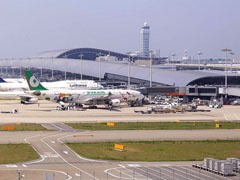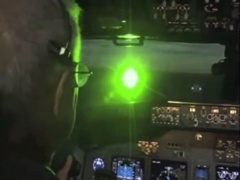 Aviation is an extraordinary industry powered by the cooperation of countless companies and people. Many of these same people aspire to keep air transport safe and running smoothly.
Aviation is an extraordinary industry powered by the cooperation of countless companies and people. Many of these same people aspire to keep air transport safe and running smoothly.
Unfortunately though, aviation has always been a target for those wanting to bring attention to their own cause by carrying out harm to the industry. It’s only a matter of time before the next attack or attempt occurs. That’s why the aviation industry must always be vigilant of the following threats.
Aviation Threats
 Terrorist Organizations: Terror groups are capable of influencing people of all backgrounds around the world to join their cause. These organizations specialize in recruiting people to carry out attacks with them or on their behalf.
Terrorist Organizations: Terror groups are capable of influencing people of all backgrounds around the world to join their cause. These organizations specialize in recruiting people to carry out attacks with them or on their behalf.
Lone Wolf Attacker: The risk of lone wolf attacks has increased. These individual attackers act on their own terms without the command or assistance of a terror group. Their actions, however, may be in support of or influenced by a terror organization. Other times, they are motivated by their own rationale. Lone wolf terrorism can include any number of attacks on facilities affecting aviation.
Hijacker: Hijackers seize aircrafts and use airline crew and passengers as hostages or as pawns for negotiation to get what they want. Although aircraft hijackings are used less often today, they still pose a threat to aviation. One of the most recent incidents occurred earlier this year when an unstable passenger wearing a fake suicide explosive belt hijacked an EgyptAir flight and had it diverted to Cyprus.
 Insider Threat: An insider threat is generally a former employee, current employee, contracted worker, or partner who misuses access or knowledge of the aviation sector. The most common types include acts of sabotage, theft, espionage, fraud, exploitation, and tampering. In March 2015, the co-pilot of a Germanwings flight intentionally crashed a passenger aircraft into the Swiss Alps, taking the lives of all 150 passengers and crew members aboard. Insider threat blog
Insider Threat: An insider threat is generally a former employee, current employee, contracted worker, or partner who misuses access or knowledge of the aviation sector. The most common types include acts of sabotage, theft, espionage, fraud, exploitation, and tampering. In March 2015, the co-pilot of a Germanwings flight intentionally crashed a passenger aircraft into the Swiss Alps, taking the lives of all 150 passengers and crew members aboard. Insider threat blog
Bombs and IEDs: The bombs and improvised explosive devices (IEDs) of today are made out of common household products that can be acquired from any local store. These explosive devices can be molded into any size or shape and are extremely dangerous when concealed well. In February 2016, a man aboard a Daallo Airlines flight detonated an explosive device built into a laptop, blowing himself out of the aircraft. No one else was seriously injured and the plane returned safely to the airport. IED evolution blog
 Suicide Bomber: Suicide attacks are not a new occurrence, but have been used more often in recent years to damage markets, hotels, and restaurants. In aviation, suicide bombers could strike anywhere. Soft targets such as lines crowded with people trying to get through airport security are vulnerable to this type of attack.
Suicide Bomber: Suicide attacks are not a new occurrence, but have been used more often in recent years to damage markets, hotels, and restaurants. In aviation, suicide bombers could strike anywhere. Soft targets such as lines crowded with people trying to get through airport security are vulnerable to this type of attack.
Surface-to-Air Missile (SAM): The SAM, ground-to-air missile (GTAM), and man-portable air-defense system (MANPADS) are all dangerous weapons used to take down aircrafts and other missiles in the sky with superb precision. In July 2014, a Russian-made missile took out a passenger aircraft with 298 people aboard MH17 over eastern Ukraine.
Cyber Attack: Cyber attacks are inexpensive to carry out, yet pose great dangers since aviation relies heavily on computer networks and systems. Air cargo facilities and airports may become targets of cyber attacks on the ground which could mean delays, loss of power, system failures, and loss of communication. Attacks to aircrafts in the sky could mean disruptions to navigation systems, losing on-board aircraft control, and no communication with the ground.
 Laser Illumination: In recent years, reports of laser illumination incidents have increased dramatically. High powered laser pointers directed at the cockpit can disorient and temporarily blind pilots as they are flying. These dangerous devices can obscure a pilot’s vision, put passenger lives in danger, and endanger civilian lives on the ground.
Laser Illumination: In recent years, reports of laser illumination incidents have increased dramatically. High powered laser pointers directed at the cockpit can disorient and temporarily blind pilots as they are flying. These dangerous devices can obscure a pilot’s vision, put passenger lives in danger, and endanger civilian lives on the ground.
Unmanned Aircraft System (UAS): Also known as drones or unmanned aerial vehicles (UAV), these aircraft systems have been spotted by pilots well above what is considered safe and legal. Some have even reported close call collisions with drones. Aviation airspace with drones blog
Summary
The aviation industry is faced with many threats and everyone must work together to keep it safe. Providing aviation security training is imperative so employees always stay vigilant of threats. Intelligence sharing on a global scale allows aviation to understand who may conduct an attack and to stop it before it begins. Being proactive with finding our own vulnerabilities as well as learning from past incidents permits us to strengthen security measures further.
What other threats present a danger to aviation security? Let us know below.
